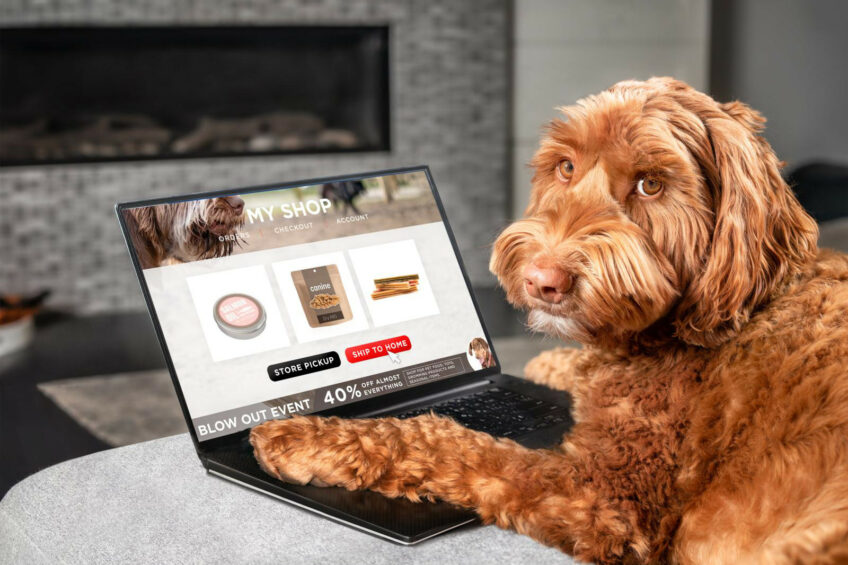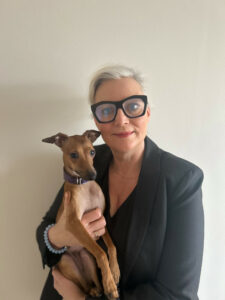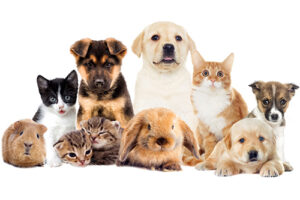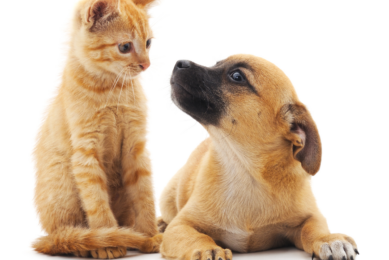EU pet food industry: Steady growth despite rising inflation

Fears that the cost-of-living crisis in Europe would derail the growth of the pet food market have not materialised, though a substantial growth in the private label segment shows that the financial side plays a role in shaping consumer behaviour.
The European pet food industry is on an upward trajectory, and the outlook is promising, said Sonia Franck, Secretary General of the The European Pet Food Industry Federation(FEDIAF), citing the recent publication of its annual ‘Facts & Figures’ report, which revealed that the sector is witnessing some encouraging dynamics.
“Europe produces approximately 9.9 million tonnes of pet food each year, with sales totalling around €29.2 billion. Both volume and value are growing steadily, with a 2% increase in volume and 9% in value [in 2023],” Franck indicated. These numbers highlight the fact that consumers continue to appreciate commercially prepared pet food, Franck continued. Pets have become an integral part of families, leading owners to pay more attention to their dietary needs.

A quick glance at the pet food aisle in supermarkets confirms the growing interest in natural and functional products.
Sonia Franck, Secretary General of the The European Pet Food Industry Federation(FEDIAF)
Independent market studies largely back these findings. “The cost-of-living crisis, fuelled by rising inflation and growing food and energy prices caused by the war in Ukraine, has had little impact on Pet Care market sales,” commented Aleksandras Bacevicius, Analyst at Euromonitor International, pointing out that this resilience is not surprising. “Historically, the pet care industry has proved to be recession-proof, or even recession-averse – it recorded growth in previous times of economic hardship, such as during the 2008 financial crisis and the Covid-19 pandemic.”
The key feature of the pet care industry is that it has a low-income elasticity of demand, Bacevicius said, explaining that pet owners are more likely to cut down on their own spending before opting to save on their pet’s needs.
Post-pandemic pendulum swing
Euromonitor International calculated that the market jumped by 12% in value in 2023, with not only the essential pet food, but also products such as cat and dog treats and mixers and pet healthcare products experienced substantial growth. “Pet care sales volume, on the other hand, has experienced a marginal decline – it comes as a pendulum swing from the Covid years, when pet populations experienced strong growth, as well as, to a lesser extent, the cost of living crisis,” Bacevicius said.
According to FEDIAF, the European pet food market keeps reaping the benefits of an increase in pet food consumption as a consequence of the COVID-19 pandemic. “During the pandemic, many EU countries saw a surge in local pet populations as households welcomed new furry companions. With extra time at home, families felt they had the time to invest and spend with a new pet,” Franck said.
Subsequently, the cost-of-living crisis has undoubtedly affected family budgets, Franck admitted. “However, commercially prepared pet food continues to be a popular choice because there is such a vast range. There is a product to suit most household budgets, needs and preferences so owners do not need to compromise on good nutrition.”
To some extent, sales are growing on the back of increasing consumer awareness of their pets’ needs. In previous decades, homemade food largely dominated pets’ diets and this practice is still widely present in some rural areas of Eastern Europe. However, a rising share of customers realise that this may not be the best solution for their cats and dogs.
“It is important to stress the importance of feeding a ‘complete’ prepared diet. When fed according to the guidelines, this will meet the pet’s nutritional needs. This can be challenging with table scraps or home-prepared food,” Franck said.

Changes in market trends
Against a background of general growth, the European pet food sector experienced an internal transformation, with both premium and budget segments on the rise.
The shift towards premium products continues to be one of the main trends in the market, with premium dog and cat food growing 14% in 2023, Euromonitor International estimated. “Nevertheless, there is some cost-of-living crisis effect on the industry with some pet owners turning to cheaper private label offerings; private label value shares in dog and cat food grew ahead of the inflation rate at 15% in 2023,” Bacevicius calculated.
Despite that, spending per pet in Europe has continued to increase in 2023 — the average dog or cat owner spends around €208 annually, which is a 12% increase on the previous year. The volume consumed by dogs and cats also continues to grow, confirming that more spending is not purely an effect of inflation but also better calorific coverage, according to Bacevicius .
Growth of private labels
The growth of the private pet label segment is the general trend seen across all the European consumer goods markets. In 2023, European private label sales reached €340 billion, an all-time record, the Private Label Manufacturers Association International Council calculated.
Private label now accounts for 38.5% of the European grocery market’s total value. The segment’s turnover increased by 13% last year, while manufacturers’ brand sales grew by less than half that much, at 6%, the Council reported.
Growth of niche markets
In addition to the price polarisation of demand, FEDIAF also notes a surge in consumer interest in new niches, with trends similar to what is seen in the human food market. “The trend of humanising pets is a significant driver in the pet food market. Increasingly, pet owners seek food options that align with their own lifestyle choices, leading to a demand for ‘natural’, ‘raw’, and ‘organic’ pet foods,” Franck said.
Growing investment in alternative proteins
Franck added that specialist products focusing on specific health benefits also enjoy strong popularity. She also noted a growing investment in alternative proteins, which reflects the industry’s commitment to innovation and meeting evolving consumer preferences.
Sustainability
“Sustainability aspects are also emerging as a significant interest and concern for pet owners, including aspects like ingredients sourcing and packaging. The industry is investing in sustainable practices to meet these evolving consumer demands,” Franck said.
Making headwind in the green transition
European environmental reforms are one of the key factors determining not only the industry’s future but also the current price on the shelves.
FEDIAF fully supports the Green Deal and its initiatives, including the Green Claims directive, Packaging and Packaging Waste Regulation (PPWR), and Directive on Empowering Consumers for a Green Transition, Franck emphasised. “The European pet food industry views the European Commission’s work on the green agenda as a positive incentive to support the sector’s journey towards a circular economy,” Franck said. However, the ever-changing regulatory environment poses challenges, she indicated. “One of these challenges is the preservation of CAT3 animal fats for use in pet food. This has been a top priority for FEDIAF in the past two years, as diverting food for fuel contradicts the EU’s waste hierarchy principle, which FEDIAF defends,” Franck revealed.
FEDIAF previously voiced concerns that the share of rendered animal fats category 3 used for biofuels has consistently increased. In contrast, its share in the pet food industry has significantly decreased in the past few years. This is creating additional market pressure, leading to severe distortions of competition. The availability is limited, not flexible and dependent on meat consumption.
“Another significant aspect of FEDIAF’s work is advocating for a standardised approach to measuring the “Product Environmental Footprint,” Franck said. She added that the pet food industry is fully committed to responsible resource usage and minimising its environmental impact. “FEDIAF takes pride in collaborating with the European Commission during the pilot phase of the Product Environmental Footprint Category Rules (PEFCRs), which are currently being updated. Some companies in the industry have already adopted life cycle analysis to support their environmental claims,” Franck said.
FEDIAF believes that a harmonised and robust methodology for measuring and improving the environmental impact of pet food products is crucial. This ensures consistent evaluation across the industry and empowers consumers to make informed choices by comparing products. “Overall, with the steadfast support of FEDIAF, the pet food industry wholeheartedly embraces the green agenda and actively works towards a sustainable future,” Franck stressed.
Better future

In the years ahead, new product formats and new ingredients will become increasingly popular. One of the main steps pet food companies have taken to adapt to changing consumer behaviours would be reducing packaging size, which translates into consumers having to buy a new pack more often, generating more revenue for the brand owner, Bacevicius said.
“Additionally, pet food productions have been becoming more and more localised, so that there’s less need for imports, thus reducing costs, as well as carbon footprint,” Bacevicius added.
In fact, per Euromonitor International’s Consumer Lifestyle’s survey, pet owners are on average more likely to buy sustainable products than non-pet owners. The analyst believes that there are a lot of new products being introduced that focus mainly on protein content and protein quality. In dog food, there’s already a range of insect-based protein food, however it remains relatively niche and is mainly sold online.
“Cats are carnivores, so no such products exist for them. Instead, cat food focuses on moisture content – aside from protein quality. For both cats and dogs, treats have been and are likely to remain the category that sees the most innovation and growth,” Bacevicius said.
Optimism about the future for pet food
FEDIAF’s Franck stressed she remains largely optimistic about the industry’s future. “Since joining the Pet Food Industry earlier this year after working in the pharmaceutical sector, I’ve been struck by the genuine passion displayed by those in the industry. There’s a strong sense of unity among our members, all driven by the common goal of providing the best nutrition for our pets. As we strive to innovate and adapt to meet the needs of Europe’s 352 million pets, I’m confident that companies committed to producing high-quality, nutritious products will contribute significantly to the industry’s ongoing success,” Franck said.











